Case story
Subgrade stabilization, Highway 48, Stouffville, Ontario
United States, Ontario, Highway 48, Stouffville,
Case Study Form
|
Application |
Subgrade stabilization |
Job owner |
Town of Whitchurch Stouffville |
|
Location |
Highway 48, Stouffville, Ontario |
Engineer |
Soil Engineers |
|
Product |
Mirafi® RS580i |
Contractor |
Coco Paving |
|
Quantity |
10,000 sy |
Date of Installation (m/y) |
July 2015 |
THE CHALLENGE: What was the objective of project?
Highway 48 is one of the main transportation arteries in the Town of Whitchurch Stouffville, part of the Regional Municipality of York, located 50 km north of downtown Toronto, ON. To accommodate increasing traffic demands, the road was to be widened by five metres in the northbound and southbound lanes over a one-kilometre stretch to accommodate a second lane of traffic in both directions.
Since this was a lane widening project, the newly constructed cross-section had to remain similar to the existing roadway. This cross section consists of: 60mm surface asphalt, 100mm base asphalt, 150mm granular base & 600mm granular sub-base. Due to the volume of traffic expected, the design life for this road was 15,000,000 ESALs.
Upon excavating the existing shoulder, topsoil of variable thickness was found to be present in the subgrade. The thickness of this topsoil was variable, exceeding 1m in some areas. When faced with the client’s refusal to approve the removal of this topsoil due to the high excavation costs, the Soil Engineers design engineer contacted the local TenCate representative to discuss the situation. The TenCate representative conducted on-site Dynamic Cone Penetrometer (DCP) analyses to determine the California Bearing Ratio (CBR) of the topsoil. In-field measurements indicated dynamic CBR values as low as 2.3%. Soil Engineers decided to apply a safety factor of approximately 1.25 and lower this value to 1.7% for design purposes.
THE DESIGN: What were the recommendations of overcoming the challenge/objective?
Applying a dynamic CBR of 1.7% (equating to a Resilient Modulus of ~ 18 MPa) with the previously mentioned road cross-section, it was determined that the life expectancy of this section would be less than 4,500,000 ESALs, far short of the required 15,000,000 ESALs. To attain this level of performance, an additional placement of 575mm of granular subbase would have been required. TenCate proposed the use of Mirafi® RS580i, an engineered high-modulus reinforcement geosynthetic with unique separation and filtration capabilities which has been calibrated, by full-scale testing, to AASHTO 93 to provide quantifiable base reinforcement in flexible pavement designs and applications.
By incorporating the benefit of the Mirafi® RS580i within the TenCate’s Miraspec design software, the revised # of ESALs dramatically increased to over 15,000,000. The design engineer submitted this design, accompanied by supporting documentation substantiating the approached incorporated into the Miraspec software, to the owner for approval and the decision was made to proceed with this approach.
THE CONSTRUCTION: Installation
Following excavation to the proper depth, the contractor rolled out the Mirafi® RS580i on top of the subgrade, and then completed the construction of the roadway as per design. Compaction of the granular material resulted in a very stable working platform allowing for the construction equipment to travel on the surface without undue rutting. The construction of the 5-metre lane expansion was completed and re-opened to local traffic on schedule.
THE PERFORMANCE: How did our material(s) make a difference? What was achieved?
The use of Mirafi® RS580i allowed the contractor and the owner to greatly reduce the amount of granular subbase that would otherwise have been required to widen the roadway lanes on this busy stretch of road.
Mirafi® RS580i provided:
- Superior tensile strength at low strains for subgrade support.
- Lateral confinement of the granular subbase.
- Substantial reduction of the granular subbase section.



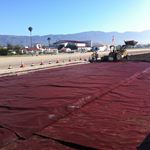
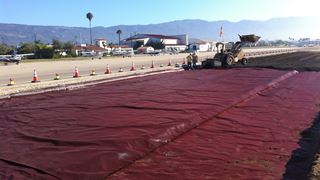
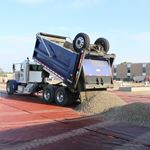
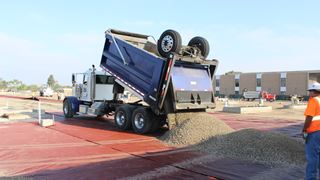
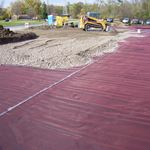
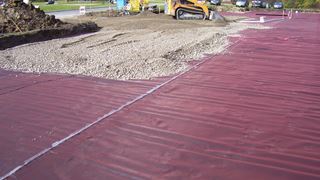
.jpg?w=40&h=40&action=crop)